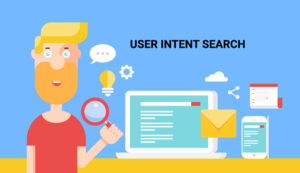How to Design User-Friendly Digital Paystub

In today’s fast-paced digital world, businesses are increasingly moving towards electronic solutions to streamline their operations. One critical area experiencing this digital transformation is payroll management. Traditional paper paystubs are being replaced by digital versions, which offer numerous benefits such as efficiency, cost-effectiveness, and environmental friendliness. However, designing a user-friendly digital paystub requires careful consideration to ensure that it meets the needs of both employers and employees.
A well-designed digital paystub should be easy to read, navigate, and understand. It should present all necessary information clearly and concisely, avoiding any confusion that could arise from poor design choices. The goal is to create a digital document that enhances the user experience while maintaining accuracy and compliance with legal requirements. This article will guide you through the essential elements of designing a user-friendly digital paystub, highlighting the importance of tools like paystub generator free to facilitate the process.
Understanding the Components of a Paystub
Before diving into the design aspects, it’s crucial to understand the fundamental components that make up a paystub. A paystub typically includes:
- Employee Information: Name, address, employee ID, and other personal details.
- Employer Information: Company name, address, and contact information.
- Pay Period Information: Start and end dates of the pay period.
- Earnings: Regular hours worked, overtime, bonuses, and other earnings.
- Deductions: Taxes, insurance, retirement contributions, and other deductions.
- Net Pay: The amount the employee takes home after deductions.
- Year-to-Date Totals: Cumulative earnings and deductions for the year.
Each of these components plays a vital role in providing a comprehensive overview of an employee’s earnings and deductions. Ensuring that these elements are clearly presented is the first step towards designing a user-friendly digital paystub.
Prioritizing Clarity and Simplicity
One of the primary goals in designing a digital paystub is to ensure clarity and simplicity. The information should be organized in a logical manner, making it easy for employees to find and understand the details of their pay. Here are some tips to achieve this:
- Use a Clean Layout: Avoid clutter by using a clean, minimalist layout. Ensure there is enough white space between sections to enhance readability.
- Consistent Formatting: Use consistent font styles, sizes, and colors throughout the paystub. This helps in maintaining a professional look and feel.
- Clear Headings: Each section should have clear, descriptive headings. This allows employees to quickly locate specific information.
- Highlight Important Information: Use bold or different colors to highlight important information such as net pay, pay period dates, and total deductions.
Leveraging Digital Tools for Efficiency
Creating a digital paystub from scratch can be time-consuming and prone to errors. Fortunately, there are numerous digital tools available that can simplify the process. Tools like paystub generator free can be incredibly beneficial. These tools often come with pre-designed templates that adhere to industry standards, ensuring that all necessary information is included and presented clearly.
Using a free paystub generator offers several advantages:
- Time-Saving: Automating the paystub creation process saves time and reduces the administrative burden on HR and payroll departments.
- Accuracy: Digital tools minimize the risk of human error, ensuring that calculations and details are accurate.
- Customization: Many generators offer customizable templates, allowing businesses to tailor the paystub design to their specific needs.
- Compliance: Most paystub generators are updated regularly to comply with the latest legal requirements and standards.
Ensuring Legal Compliance
When designing a digital paystub, it’s essential to ensure that it complies with legal requirements. Different regions have specific regulations regarding the information that must be included on a paystub. Failure to comply with these regulations can result in legal issues and penalties. Key legal considerations include:
- Mandatory Information: Ensure that all legally required information is included on the paystub. This typically includes employee details, employer information, pay period dates, earnings, deductions, and net pay.
- Accuracy: Ensure that all information on the paystub is accurate and up-to-date. Errors in earnings or deductions can lead to employee dissatisfaction and legal problems.
- Privacy: Protect employee privacy by ensuring that sensitive information is securely handled and stored. Digital paystubs should be delivered through secure channels to prevent unauthorized access.
Enhancing Accessibility
Accessibility is another crucial factor in designing user-friendly digital paystubs. Employees should be able to easily access their paystubs whenever they need them. Here are some tips to enhance accessibility:
- Mobile-Friendly Design: Ensure that the paystub design is mobile-friendly, allowing employees to view their paystubs on their smartphones or tablets.
- Email Delivery: Provide the option for employees to receive their paystubs via email. This ensures that they can access their paystubs from anywhere with an internet connection.
- Online Portals: Consider implementing an online portal where employees can log in to view and download their paystubs. This provides a centralized location for managing paystub access.
Personalization and Customization
Personalizing and customizing paystubs can enhance the user experience. Employees appreciate paystubs that are tailored to their specific needs and preferences. Here are some ways to achieve this:
- Customizable Templates: Use digital tools that offer customizable templates. This allows you to add company branding, logos, and other elements that reflect your business identity.
- Personalized Messages: Include personalized messages or notes on the paystub. This can be used to communicate important information or express appreciation to employees.
- Flexible Formatting: Allow employees to choose their preferred format for receiving paystubs. Some may prefer PDF files, while others might opt for HTML or text formats.
Providing Clear Explanations
Despite best efforts to design a clear and concise paystub, employees may still have questions about specific details. Providing clear explanations can help address these questions and enhance understanding. Here are some tips:
- Glossary of Terms: Include a glossary of common payroll terms and definitions. This helps employees understand specific jargon used on the paystub.
- FAQs: Create a list of frequently asked questions (FAQs) related to paystubs and payroll. This can be included in the paystub itself or made available through an online portal.
- Contact Information: Provide contact information for the HR or payroll department. This allows employees to reach out if they have specific questions or concerns.
Leveraging Feedback for Continuous Improvement
Designing a user-friendly digital paystub is not a one-time task. It’s essential to continuously gather feedback from employees and make improvements based on their suggestions. Here are some strategies for leveraging feedback:
- Surveys and Polls: Conduct surveys or polls to gather feedback on the paystub design and overall payroll process. Ask specific questions about clarity, accessibility, and satisfaction.
- Focus Groups: Organize focus groups with a representative sample of employees to discuss their experiences with the paystub. Use their feedback to make targeted improvements.
- Regular Updates: Regularly update the paystub design and format based on feedback and changing needs. Ensure that employees are informed about any changes and their benefits.
Conclusion
Designing a user-friendly digital paystub involves careful consideration of clarity, simplicity, accessibility, and legal compliance. By Using Free paystub generator businesses can streamline the paystub creation process and ensure that all necessary information is accurately presented. Continuous improvement based on employee feedback is crucial to maintaining a high level of satisfaction and efficiency. A well-designed digital paystub not only enhances the user experience but also contributes to a smoother and more efficient payroll process.




